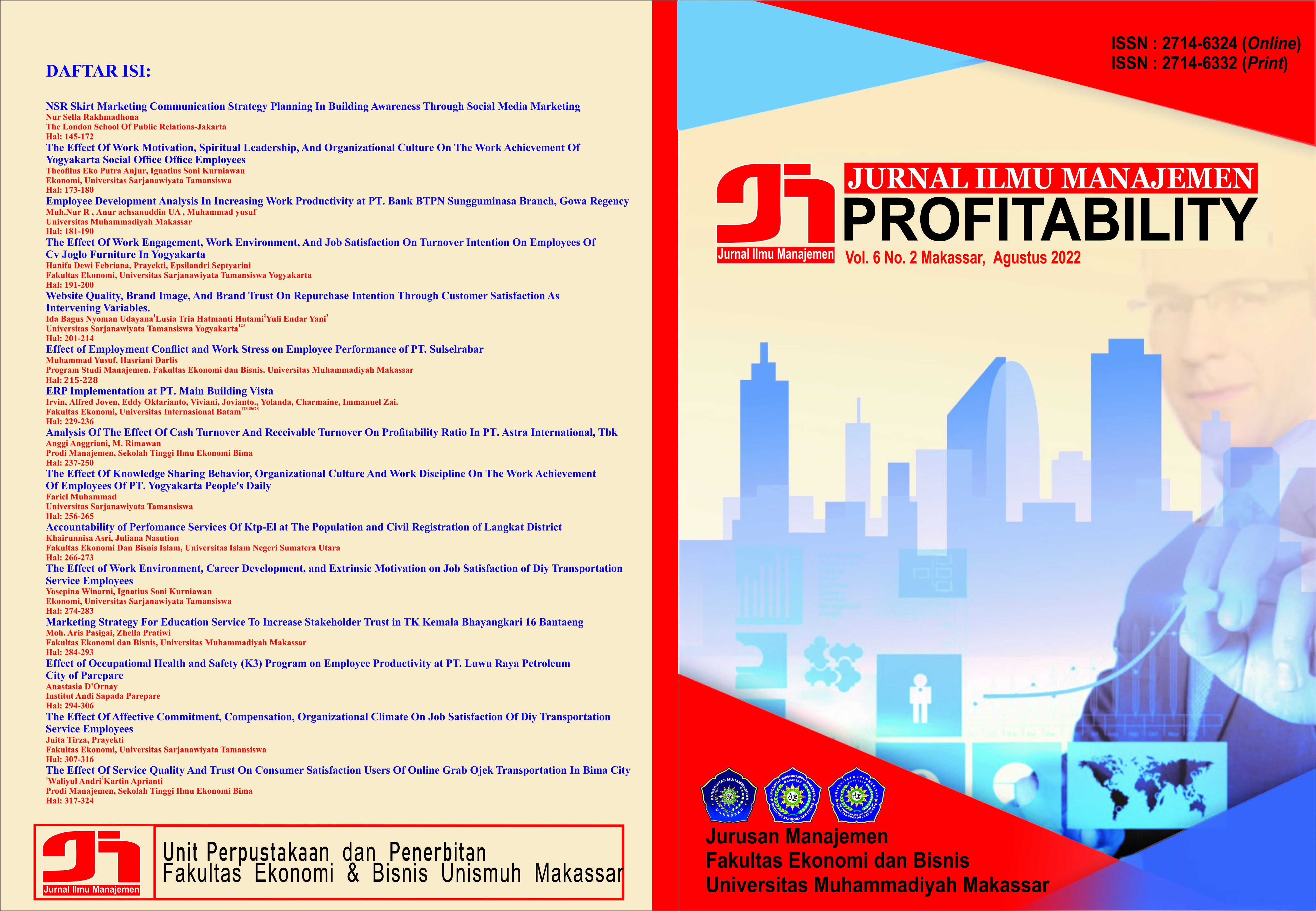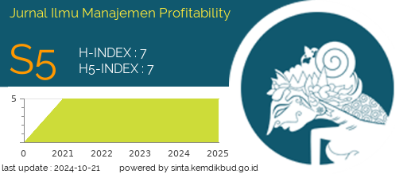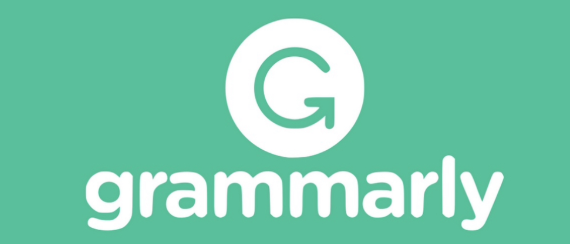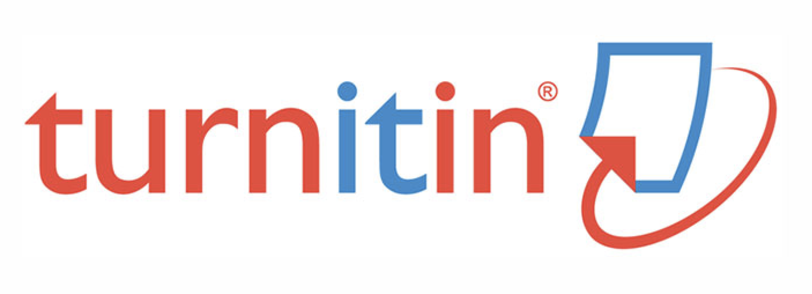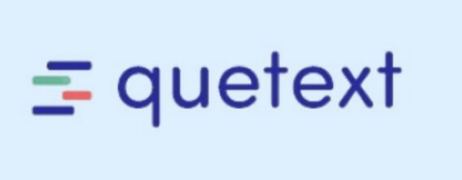Comparative Analysis of Bank Soundness Levels Using the RGEC Method at PT. Bank Muamalat and PT. Indonesian Sharia Bank
DOI: https://doi.org/10.26618/profitability.v9i1.17353
Bank Health, RGEC (Risk Profile, Good Corporate Governance, Earning and Capital)
Abstract
Comparison between the health levels of Bank Muamalat , a national private bank, and Bank Syariah Indonesia, a state-owned enterprise, is based on their published 2022 annual financial statements. This study aims to assess the financial health of both banks and compare their health levels using the RGEC method (Risk Profile, Good Corporate Governance, Earnings, and Capital). The research employs a quantitative approach with a comparative field research type, focusing on financial health by analyzing financial performance in 2022 through the RGEC method. This study uses secondary data sourced from the 2022 annual reports of both banks, published by the Financial Services Authority (OJK). The findings indicate that Bank Muamalat performed well in liquidity and capital but needs improvement in profitability, particularly in return on assets. The composite rating for Bank Muamalat in 2022 was 68.57%, placing it in the PK-3 category, meaning it is 'Quite Healthy.' Bank Syariah Indonesia exhibited excellent performance in risk profile, capital, and operating margins. Its composite rating in 2022 was 74.28%, classifying it under the PK-2 category, meaning it is 'Healthy.' The different composite rankings suggest variations in financial health between the two banks. Future research is recommended to incorporate additional assessment factors and continue using the RGEC method to provide a more comprehensive evaluation of bank health.
References
Antonio, MS (2001). Islamic Bank: From Theory to to Practice . Gema Insani Press.
Ascarya . (2014). Sharia Bank Agreements and Products . Rajawali Press.
Kasmir . (2014). Banks and Financial Institutions Others . Rajawali Press.
Financial Services Authority (OJK). (2021). Report Finance and Banking Performance .
Ministry of State-Owned Enterprises. (2021). Press Release Merger of Sharia Banks .
Ismail. Banking Management: From Theory to Application . Kencana, 2017
Cashmere. Banks and Financial Institutions Others . Jakarta: Rajawali Press , 2014
Cashmere. Banking Management . Revision. Jakarta: PT Raja Grafindo Persada, 2010.
Kuncoro, Mudrajad, and Suhardjono. Banking Management Theory and Application . Second edition. Yogyakarta: BPFE-YOGYAKARTA, 2019.
Kasmir. (2016). Banking Management. Jakarta: RajaGrafindo Persada.
Darmadji, T., & Fakhruddin, H. M. (2011). Capital Market in Indonesia. Jakarta: Salemba Empat.
Sari, N. P., & Wicaksono, A. (2021). Analysis of Islamic bank soundness using the RGEC method. Islamic Finance Journal, 8(2), 123-135.
Ramadhan, A. (2022). Comparison of Bank Muamalat and BSI performance using the RGEC method. Islamic Economics Journal, 10(1), 45-58.
Afkar, T. (2022). The impact of mergers on the financial performance of Bank Syariah Indonesia. Sharia Management Journal, 7(3), 67-80.
Downloads
Published
Issue
Section
License
Authors who publish with Jurnal Ilmu Manajemen Profitability agree to the following terms:
Copyright of the articles remains with the authors.
Authors grant the journal the right of first publication with the work simultaneously licensed under a Creative Commons Attribution-NonCommercial 4.0 International License (CC BY-NC 4.0). This license allows others to:
Share (copy and redistribute the material in any medium or format)
Adapt (remix, transform, and build upon the material)
as long as they give appropriate credit to the original author(s) and source, provide a link to the license, and indicate if changes were made. Non-commercial use only.
Authors are permitted to:
Distribute their published work (e.g., post it to an institutional repository or publish it in a book), with an acknowledgment of its initial publication in this journal.
Enter into separate, additional contractual arrangements for the non-exclusive distribution of the journal’s published version of the work (e.g., post it to a class website or institutional archive).
For permissions to use the content published in this journal beyond the scope of the license (e.g., commercial purposes), please contact the editorial office via the journal email.
License Details:
This journal is licensed under a Creative Commons Attribution-NonCommercial 4.0 International License (CC BY-NC 4.0).

